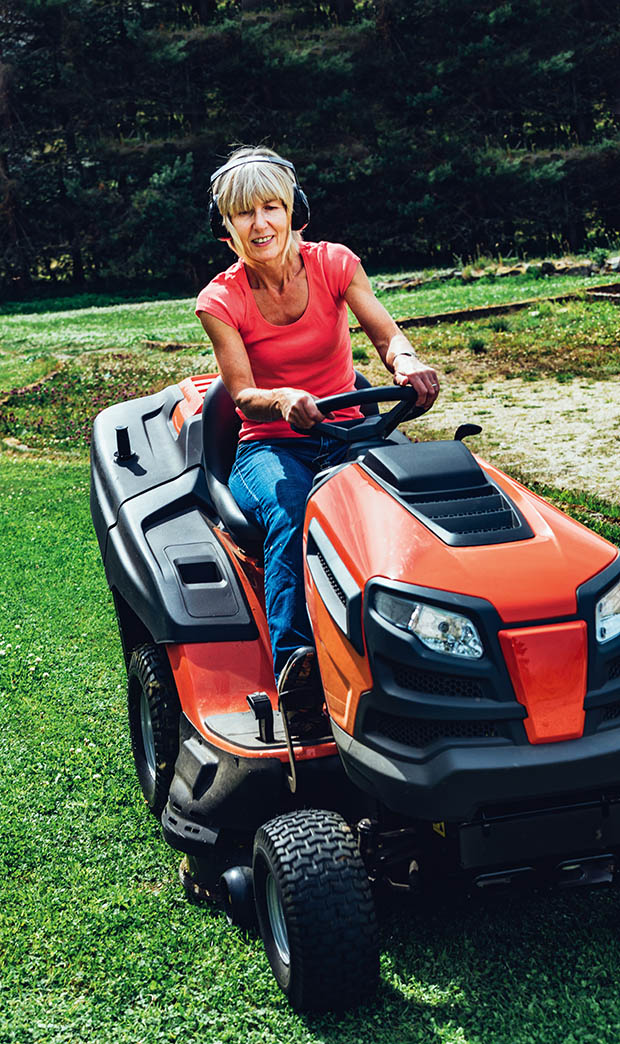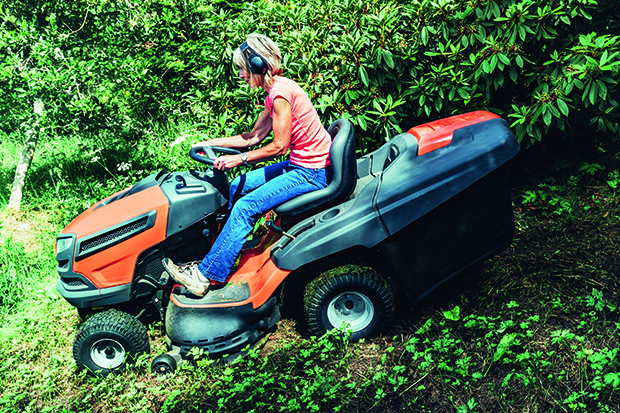Tips for mowing on a slope

Simple tips for safely maintaining a steep area.
Words: Michael Andrew
In a country like New Zealand, seldom is a farmer or block owner blessed with a tabletop-flat piece of land. In fact, gnarly inaccessible slopes are often the major features of many rural properties. But what to do with such a piece of land? You could graze it, plant it out in natives, or turn it into an orchard or lawn.
The difficulty with the latter options is the maintenance of the slope so that weeds and grasses don’t grow out of control. Using a weed eater is usually the most simple and safe method of maintaining steep gradients. However, if the area is particularly large and time is a factor, it can be far quicker to use a ride-on or tractor with a mowing implement attached.
This method, however, comes with its own unique set of challenges. Some block owners who have mowed on a slope will be familiar with the unsettling feeling of the machine stalling or its back wheels lifting or sliding. According to Brent Willing, sales manager at Trimax, this comes down to two things: centre of gravity and fuel accessibility.
“The centre of gravity is reliant on the width of your wheelbase and the distribution of weight across it,” he says. “If the weight of your system is concentrated at a point high above the ground, it will be more unstable on a steeper slope. Some tractors can mitigate this by widening their wheelbase for slope operations.”

A machine stalls because as it tilts, the fuel within the tank may move away from the fuel pickup, Brent says. This may happen when there’s not enough fuel in the tank, and can cause air to be pulled into the fuel system and the engine to stall.
Brent recommends a few best-practice points to be aware of when mowing on a slope:
• Make sure you mow directly up and down a slope rather than across it to reduce the risk of tipping.
• Take note of and avoid any holes, bumps or obstacles on the slope to prevent your machine being thrown off balance.
• Check the treads on your tyres and the conditions of the slope – especially noting any wet grass, muddy areas, or loose soil – to prevent the loss of traction during operation.
• Ensure the fuel tank is adequately filled to prevent stalling.
Lastly, he recommends checking the type of equipment and what it’s suitable for. “The degree to which you can safely operate on a slope will be determined by the manufacturer of the power unit or tractor to which the mower is attached,” he says.
“These specifications should be clearly documented in the operator manual that comes with your machine.”
Love this story? Subscribe now!
 This article first appeared in NZ Lifestyle Block Magazine.
This article first appeared in NZ Lifestyle Block Magazine.
